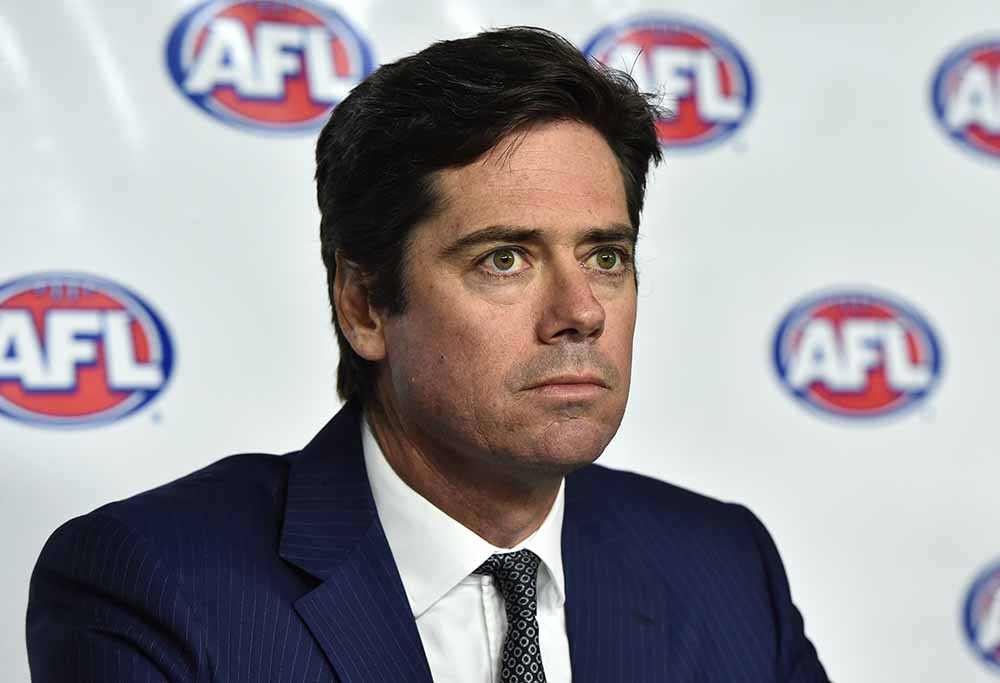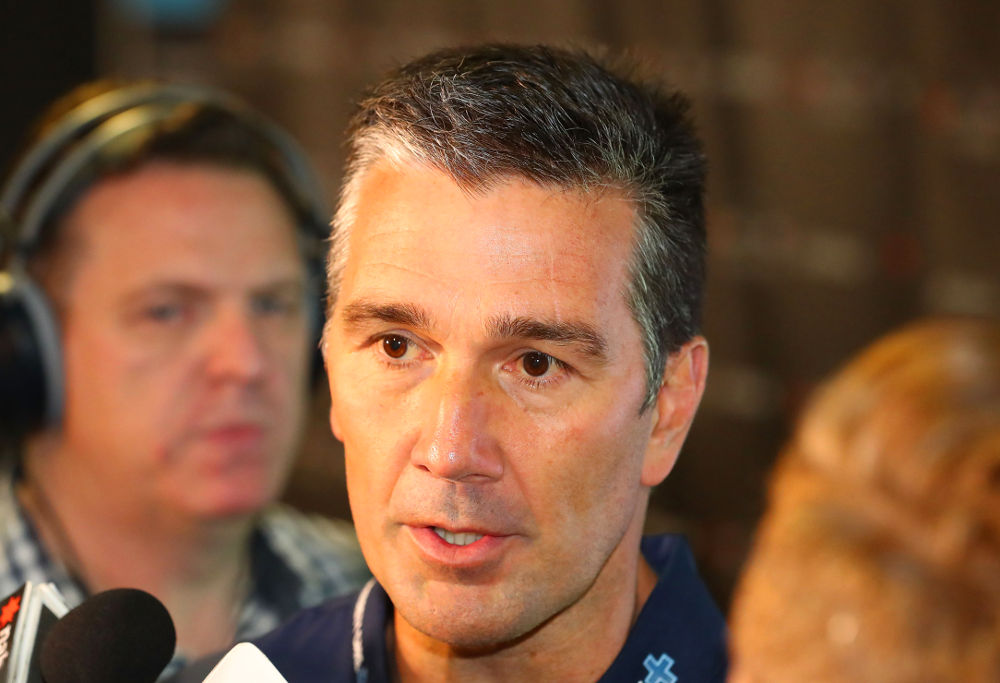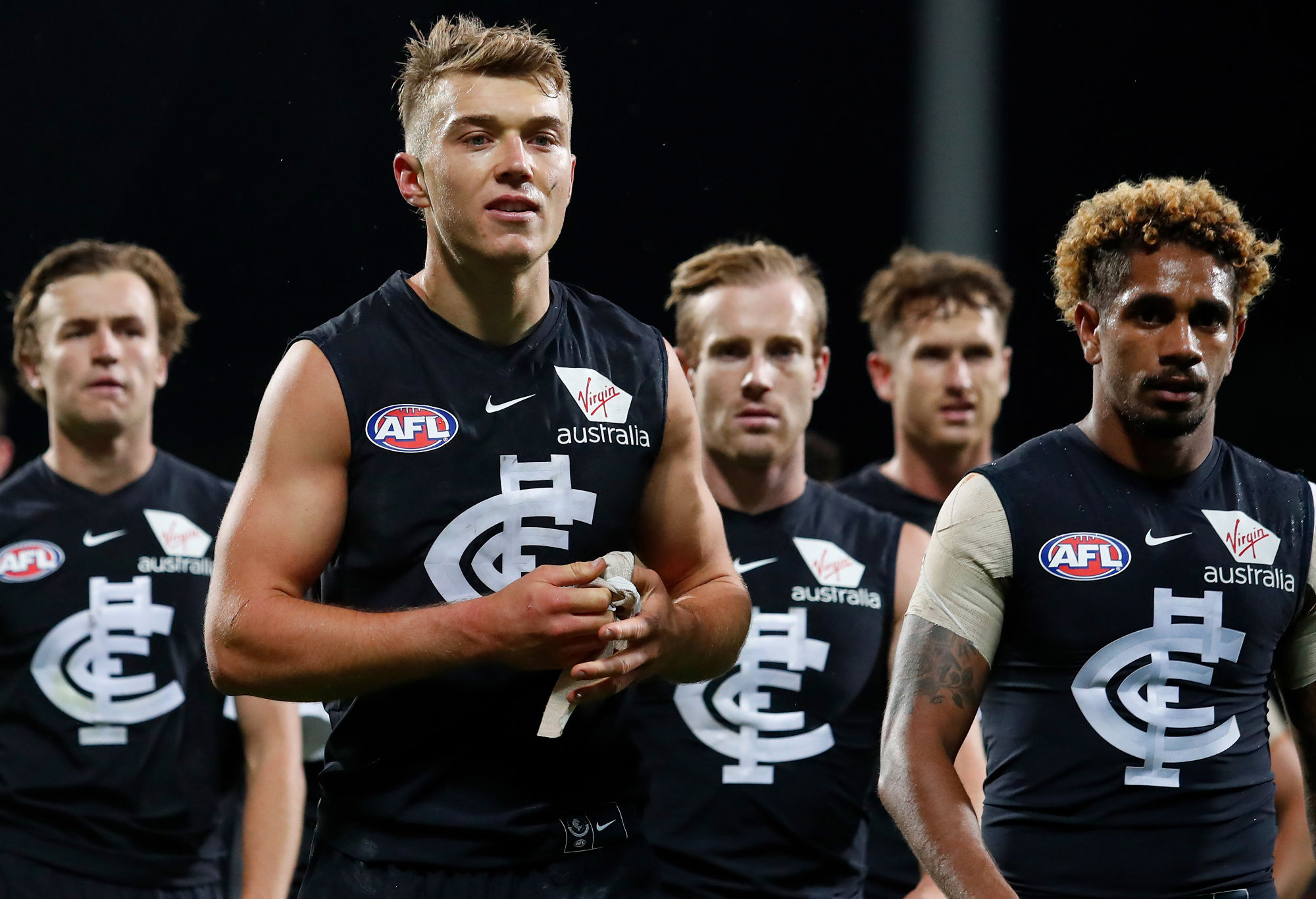Those who regularly read my articles here on The Roar may, by now, have clued into the fact that I am a bit keen on this whole trade period thing.
What can I say? It’s like my Christmas. While you’re probably thinking to yourself ‘it’s too early to start talking about the 2018 trade period’, mate, I’m already thinking about 2019 (have you seen how many players the Giants have out of contract then?).
That being the case, it may come as a surprise that I actually think we need to tone down the rate of player movement a little. Let’s talk about why.
There’s been some notable change in recent years in the trade period landscape and it looks like there will be more in the near future.
We have recently seen the introduction of the ability to trade future picks, and the new points-based approach to father-son and academy bidding.
On the horizon, it looks like a mid-season trade period and live trading up to and during the draft itself are things that could be introduced in the next 12 months, if not sooner.
In 2018, we’re still waiting for the AFL to confirm the dates for this year’s trade period and draft, presumably because the potential introduction of new rules and mechanics is still up in the air.
We’ve known these changes have been coming for a while, as AFL CEO Gillon McLachlan came out in strong support of them on the Road to the Draft podcast late last year (a highly recommended listen if you’re not already around it).
The rationale? According to McLachlan, he wants to speed up the pace at which clubs are able to rebuild their lists by putting more ‘leverage’ into the system.
“A broader ambition that I’d like to get done is if you’re really well managed you can rebuild in three to four years, not five or six,” said McLachlan.
“Tools that mean if you’re really smart and well managed you can make a lot of change and have more leverage – that’s good.”
What this equates to, in McLachlan’s opinion, is simple: more players changing clubs.
“People talk about loyalty and all those challenges of free agency. Players are incredibly loyal, which is good. We get to the end of trade period and people are bemoaning the lack of trades and player movement again,” said McLachlan.
“If anything, I think there needs to be more player movement. If you actually want to get clubs who are well-managed climb quicker, then freer player movement helps that.
“I think there’s an opportunity for greater player movement.”
The idea of re-shaping the league’s player movement landscape to make it easier for clubs to rebuild more quickly is indeed a noble one, Gillon – but it’s simply not going to work.

(AAP Image/Julian Smith)
Why? Speaking as a keen observer of the AFL’s trade period, it’s because the vast majority of player movement heads in either of two directions.
The first is top-tier quality players moving from clubs lower in the pecking order to clubs higher in the pecking order.
The second is lower-tier quality players moving in the opposite direction, usually because they’re struggling to get a game where they’re currently at.
There are a few exceptions of course, some of them quite notable. Sometimes individuals have unique reasons for wanting to move clubs, such as Dayne Beams’ decision to request a trade to Brisbane in 2014.
However the vast majority of player movement each year could be allocated to one of these two broad categories.
Consider for example Tom J Lynch – at the moment he plays for the second-worst club in the league, and is almost certainly going to leave them to join one of Richmond, Collingwood or Hawthorn.
Those are the three largest Victorian clubs in the league as measured by membership size, and combined have won five of the last eight premierships (probably six of the last nine soon enough).
There simply isn’t enough money in the salary cap to create a third direction of trade where players regularly leave top clubs for poor clubs because the deal is just too good to say no to.
Let me take you back for a moment to 2016 when, in the NBA, Australian free agent Matthew Dellavedova left the Cleveland Cavaliers (coming off a championship season) to sign with the Milwaukee Bucks (12th in the eastern conference with a 33-49 record that year).
Why would a player make a move like that? Pretty simple really – it saw Delly go from a salary of US$1.4 million per season to US$9.6 million – a salary increase of 585 per cent, or a net gain of US$8.2 million per year.
Every man has his price, but we simply don’t have the salary cap room in the AFL to sway players with an offer like that.
Most players are looking at a difference of $50,000 – $100,000 per year to switch clubs, those who are very elite might be looking at $300,000 at the absolute max.
Instead big offers from clubs lower down the table are used primarily to help players get a bigger deal at the club they want to stay with.
Look at Dustin Martin for example, whose contract offer at the start of 2017 was worth about $800,000 per year and rocketed to $1.2 million in no small part due to his manager using the $1.5 million reportedly on the table from North Melbourne as leverage.
I suspect a similar thing occurred with Rory Sloane and the Adelaide Crows, where Sloane landed himself a five-year deal despite the fact he’ll turn 29 next year, and I reckon it’s much the same right now between Jeremy McGovern and the West Coast Eagles.
We’ve seen unique cases like Gary Ablett leaving Geelong to go to Gold Coast for a deal that might have been in the realm of $2 million per year, but those were extreme circumstances. Unless the league’s cashflow radically increases, it’s never going to become commonplace.

(AAP Image/Julian Smith)
So long as player movement happens largely in these two directions – top-tier players moving to top-tier clubs, lower-tier players moving to lower-tier clubs – then opening the floodgates on player movement is only going to accelerate the widening of the gap between the AFL’s best and worst.
Look, for example, at Carlton, whose ’66-game rebuild’ has taken them from a four-win wooden spoon in 2015 all the way to what looks like a one-or-two-win wooden spoon in 2018.
Just a few weeks ago Carlton list manager Stephen Silvagni called out this very same problem, saying that the free agency system favours top-tier clubs.
“If you are a free agent you are generally looking at a top-four or five club,” said Silvagni.
“If I’m 26 years of age, [you ask yourself] have I not won a flag? And can I get some money out of it?
“You are looking at the top clubs, you are not really looking at a bottom-end clubs, unless they have out an offer in front of you that has just blown you away that you can’t say no to.”
Silvagni’s solution was to introduce rules that make it harder for free agents to go to top-tier clubs, but that’s just not realistic – there’s no way the AFLPA would accept it.
The essential grip on Silvagni’s behalf is that you can’t force a good player to move to your bad club and as frustrating as that is, there’s really nothing that can be done about it except to reduce the rate at which players do move clubs.
The Blues have been one of the most active clubs at the trade table in the last three years under Silvagni’s management, but the trades they’ve made have largely conformed to the directions of player movement as described.
They’ve sent out quality first-choice players like Lachie Henderson, Zach Tuohy and Bryce Gibbs, and brought in the sloppy seconds of other clubs such as Sam Kerridge, Billie Smedts and Rhys Palmer.
Sending away those players has given Carlton some of the draft picks that they’ve used to fuel their rebuild, but it’s also robbed them of the mature generation that could be helping them to stay more competitive right now, which would aid the development of their young talent.
Because of that it’s undoubtedly going to take them longer to become a finals-quality football team than it would if those players had stayed to mentor and develop the next generation – good coaching can do plenty, but only so much. They need to have that influence onfield from their teammates also.
This isn’t because Carlton don’t want to sign quality players. They made a big play for Tom Rockliff last year for example and have said they’re keen on Jeremy McGovern and Andrew Gaff this year.
But Rockliff picked Port Adelaide over what was probably a better financial offer from Carlton because there was more prospect of success, and Gaff and Gov will no doubt rebuff the Blues for the same reason.
Instead, the only way up out of the list management muck for Carlton is to commit hard to the ‘draft and hold’ strategy and hope that they bring the right kind of players into the club and they are developed by the right kind of people in the football department.
And to Carlton’s credit, this is what they’ve done over the last few years and while it hasn’t had much impact onfield just yet, eventually the wheel will turn.
Certainly, Stephen Silvagni has made a few list management decisions in his time at the club that haven’t come off great, but no one’s perfect, and he’s done a reasonably strong job of trying to get Carlton out of the hole that Shane Rogers dug them into.

(Photo by Scott Barbour/Getty Images)
Gillon’s “more trades” philosophy isn’t going to help a team like Carlton because it’s only going to make it harder to stick to the draft and hold strategy.
That strategy is all about gradually bringing in elite individuals who can become the reliable pillars of the playing list, but it only works if those players commit to being there longterm.
In a climate where player movement is more commonplace, it’ll be harder to convince players to commit longterm to a club that isn’t doing all that great at the moment.
Carlton have brought in two of these players so far under Silvagni (and will hope that others can emerge from what they’ve acquired in recent years).
Charlie Curnow has put pen to paper to stick with the club for the long term, but WA-born midfielder Patrick Cripps is yet to re-sign beyond 2019.
Cripps seems the loyal type and the whispered word is that he has told the club he will recommit. Fingers crossed that rumour proves to be true.
In an AFL where player movement is more commonplace, however, the more likely scenario would be that Cripps eyes a return home and a move up the ladder by asking for a trade to West Coast.
After all, if we loosen the bonds of loyalty in order to speed up the pace of player movement, what good reason would he have not to?

(Photo by Adam Trafford/AFL Media/Getty Images)
I suspect that Gillon McLachlan is a clever enough bloke to understand this, and that leads me to belive that his motivation behind increasing player movement is not to help rebuilding clubs, but something else entirely.
After all, it’s not like radically increased levels of player movement in the NBA have helped that competition become some sort of ultra-balanced utopian paradise anyway – thank you very much Kevin Durant.
To quote him again: “We get to the end of trade period and people are bemoaning the lack of trades and player movement again.”
I would guess that what Gillon McLachlan and the AFL really want is for trade period to be a bigger and bigger media event year after year, and continue to allow the league to dominate headlines at a time when papers might otherwise turn their eye to the beginning of, say, a new A-League season.
Player movement has become a media monster in recent years. If you’ve ever spent a few hours having Terry Wallace’s voice slowly drill a hole through your skull on Trade Radio in October you’ll have noticed, too, that it comes with plenty of opportunity for advertising.
The rate at which players move has been increasing too – it’s not that long ago that you’d have trade periods where ten or fewer players might move clubs. Now each year we reliably see 30 or 40.
That number borders on being unsustainable though, especially if we want it to regularly be the big and well-known players who are changing their colours.
Just three years ago we had major drama when Ryan Griffen and Tom Boyd made last-minute trade requests in a deal we’ve been gabbing about ever since. The AFL, I reckon, would like to see scandal like this every year.
However, in 2017, the trade period was almost a bit of a fizzer. Little happened until deadline day, during which there was a flurry of activity, but the vast majority of it had been well telegraphed in advance. There were a few twists and turns, but nothing on the level of Griffen-Boyd.
Deals like those made Jake Stringer, Bryce Gibbs or Gary Ablett were certainly interesting, but I suspect that behind closed doors the AFL would have privately been a bit disappointed that someone like Nat Fyfe decided to stay at Fremantle rather than make headlines in October.
And look, as a diehard trade period fanboy, the kind of bloke who spends that two weeks of October glued to my laptop watching Twitter so that I can follow every curiosity and curveball, I get it. We all love an M Night Shyamalan style twist-ending to trade period.
However, if all it’s going to do is make the strong clubs stronger and make it a harder and longer process for rebuilding clubs to turn things around, then I reckon less is more when it comes to AFL trades.
If we want trade period to get better media coverage, why not instead come up with some ways of making it so that there’s an even spread of deals over the length of the period, rather than everything getting done in a rush on the final day?
Speaking as someone who is always keen to write about trade period as it’s happening, I would have loved to dissect in detail the deals made for Jake Stringer, Gary Ablett, Charlie Cameron, Lachie Weller and Josh Schache last year – but there was just no chance to do it with them all wedged so close together on deadline day.
Find a way to spread those out over a longer period of time and I guarantee you we will spend plenty of time writing and talking about them and giving the AFL plenty of free advertising by doing so.
That seems like a good way to me for the league to have its cake and eat it too.

































































































